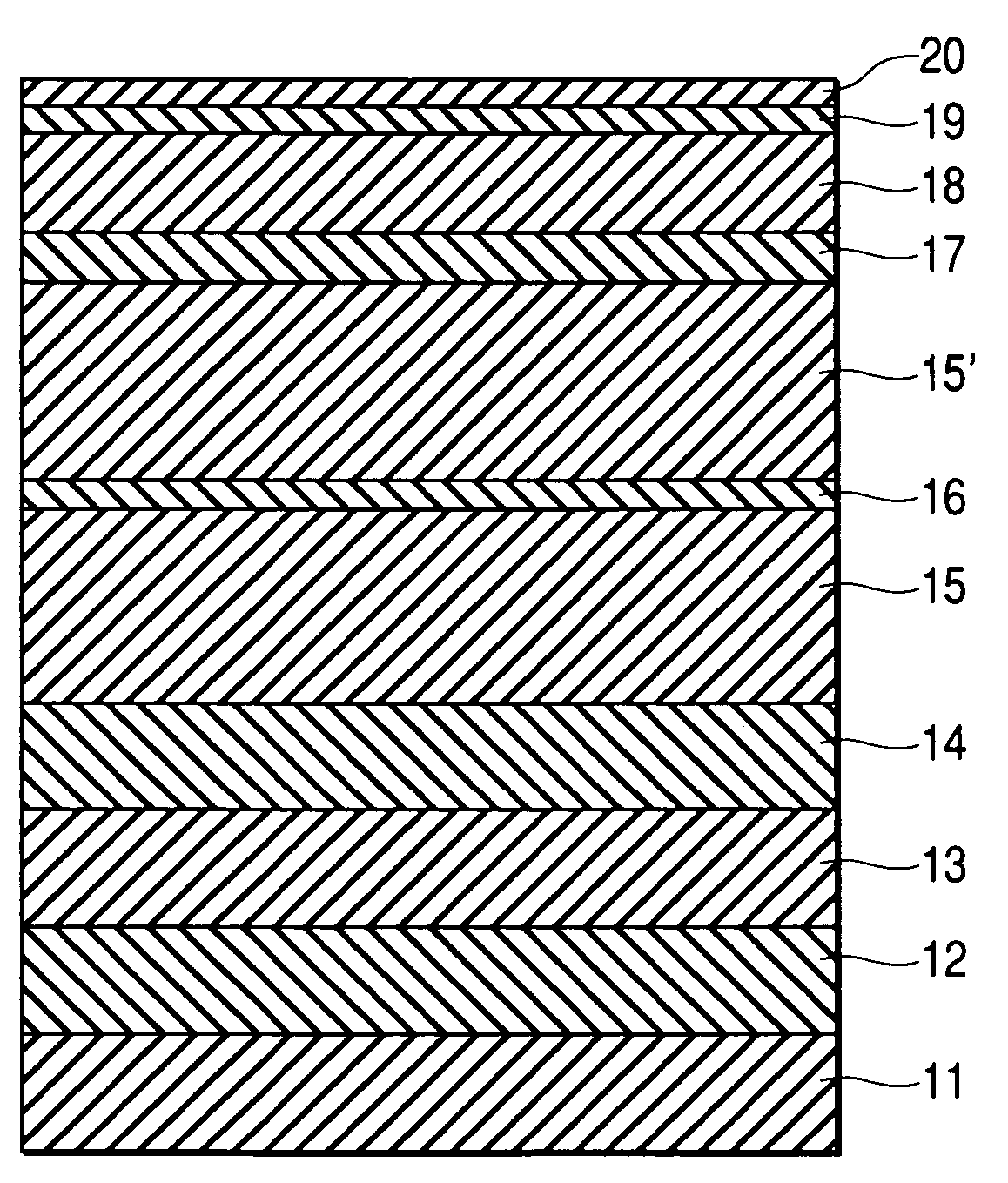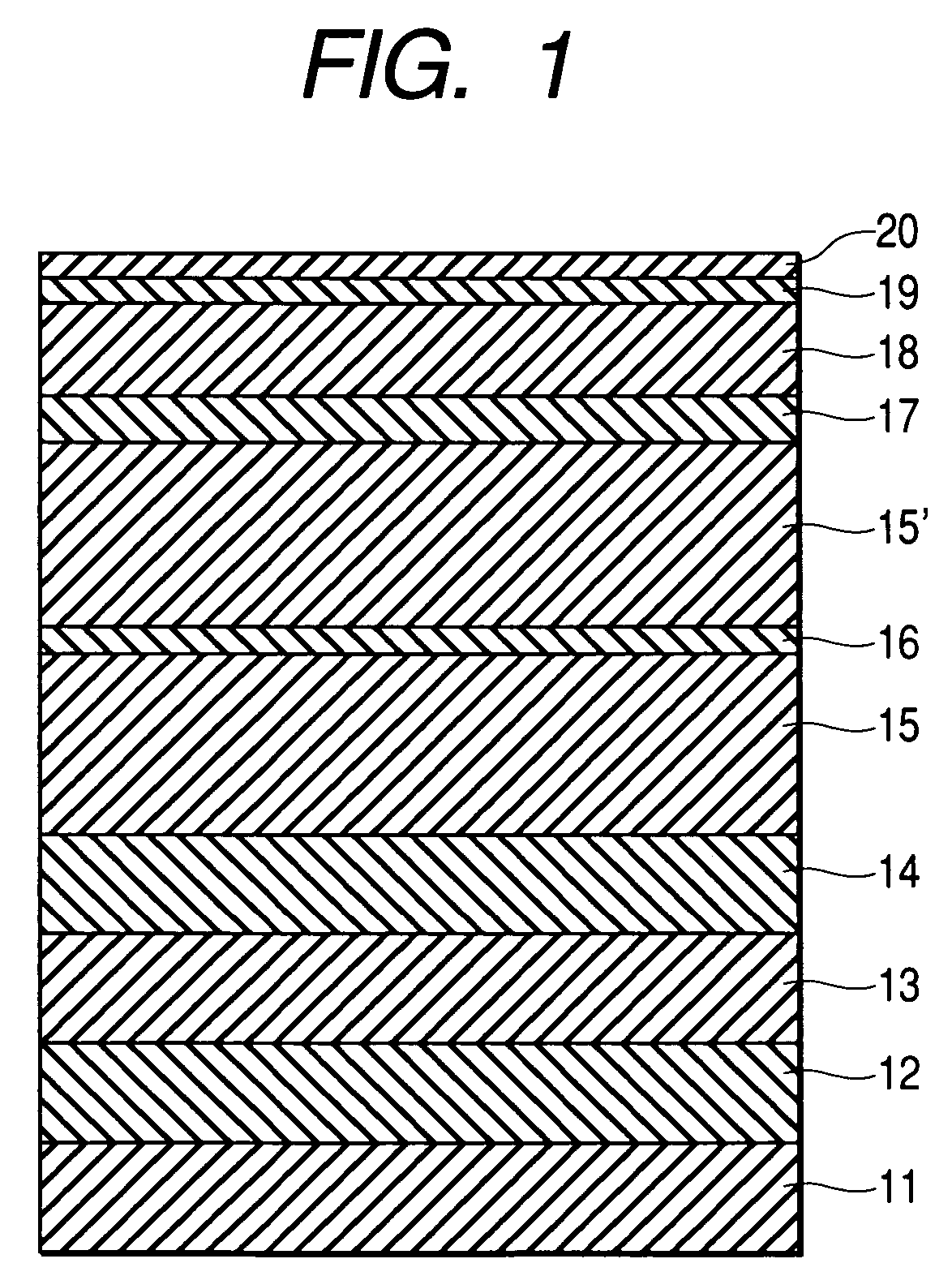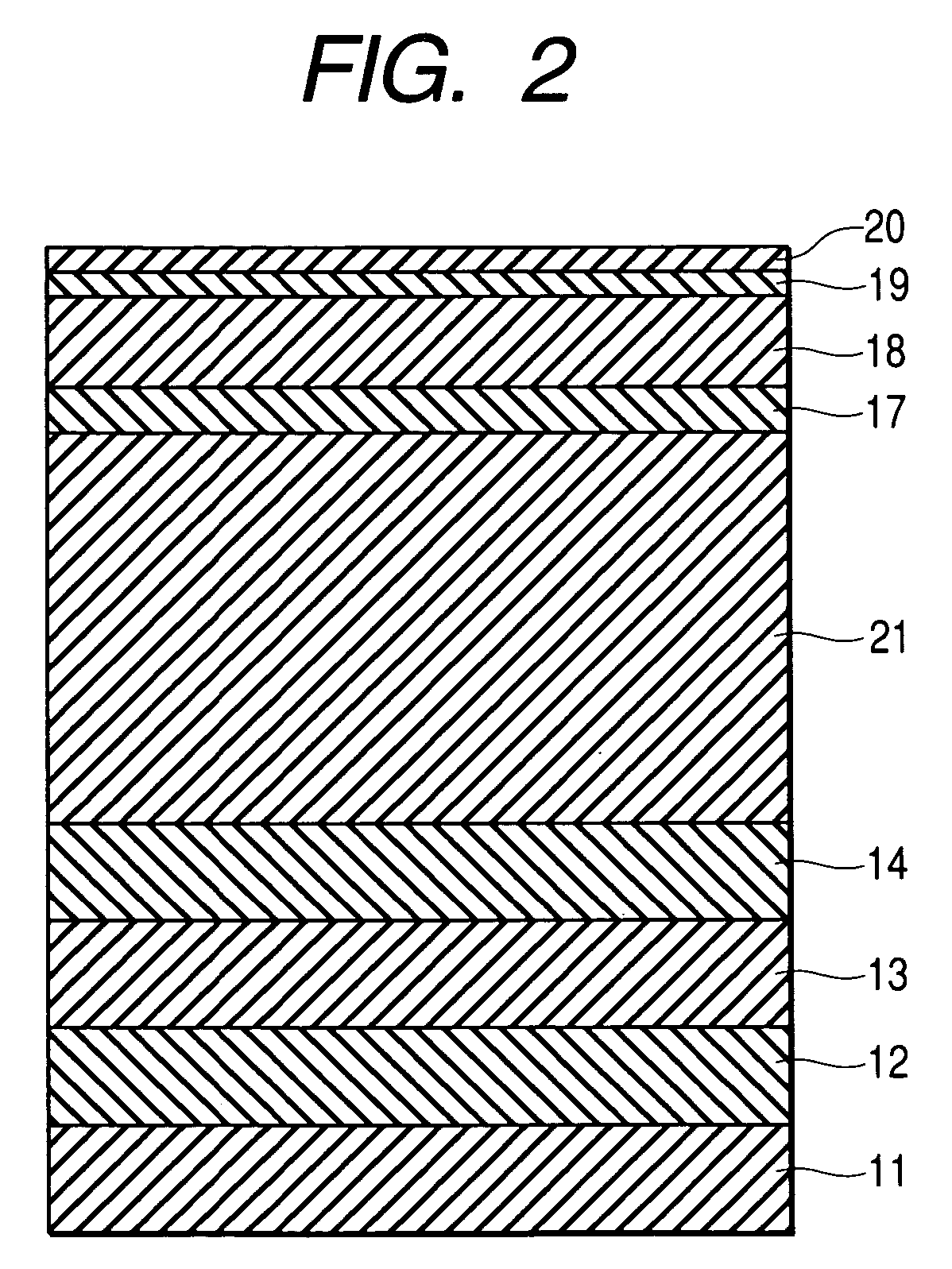Perpendicular magnetic recording medium, manufacturing process of the same, and magnetic storage apparatus using the same
a magnetic recording medium and perpendicular magnetic technology, applied in the field of magnetic recording medium and magnetic storage apparatus, can solve the problems of spike noise caused by leakage magnetic flux caused by a domain wall in the soft magnetic underlayer, difficult to reach the real recording density of over 7.75 gbit per square centimeter, and thermal decay of magnetically recorded data, etc., to achieve high reliability and high reliability
- Summary
- Abstract
- Description
- Claims
- Application Information
AI Technical Summary
Benefits of technology
Problems solved by technology
Method used
Image
Examples
first embodiment
[0051](First Embodiment)
[0052]FIG. 1 shows the layer structure of a perpendicular magnetic recording medium according to the first embodiment. A 2.5-type glass disk is employed as a substrate 11. Sequentially formed on the substrate 11 are a pre-coating layer 12, an fcc-metal layer 13, an antiferromagnetic layer 14, and a first amorphous soft magnetic layer 15, by sputtering. Then, the substrate 11 is heated approximately to 200° C. by a lamp heater and is cooled to approximately 60° C. in a magnetic field. The magnetic field upon cooling is directed from the outer periphery to the inner periphery along the radial of the disk substrate. The magnetic field ranges from 8 kA / m to 10 kA / m on the disk substrate. Then, a non-magnetic layer 16, a second amorphous soft magnetic layer 15′, an intermediate layer 17, a perpendicular recording layer 18, and a protective layer 19 are sequentially formed on the substrate 11. Table 1 shows a target composition, an Ar gas pressure, and the thicknes...
second embodiment
[0065](Second Embodiment)
[0066]FIG. 8 shows the layer structure of a perpendicular magnetic recording medium according to the second embodiment of the present invention. A 2.5-type glass disk is employed as the substrate 11. Sequentially formed on the substrate 11 are the pre-coating layer 12, the fcc-metal layer 13, the antiferromagnetic layer 14, the first amorphous soft magnetic layer 15, a first ferromagnetic layer 81, the non-magnetic layer 16, a second ferromagnetic layer 81′, and a second amorphous soft magnetic layer 15′ by sputtering. Then, the substrate 11 is heated to approximately 250° C. by a lamp heater, the intermediate layer 17, and the perpendicular recording layer 18 are sequentially formed on the substrate 11, and the substrate 11 is then cooled approximately to 60° C. in a magnetic field. The substrate temperature just before entering a cooling unit with a magnetic field is approximately 200° C. The magnetic field upon cooling is directed from the outer periphery...
third embodiment
[0071](Third Embodiment)
[0072]FIG. 9 shows the layer structure of a perpendicular magnetic recording medium according to the third embodiment of the present invention. A 2.5-type glass disk is employed as the substrate 11. Sequentially formed on the substrate 11 are the pre-coating layer 12, the fcc-metal layer 13, the antiferromagnetic layer 14, and a first amorphous soft magnetic layer 91, by sputtering. Then, the substrate 11 is heated approximately to 200° C. by a lamp heater, and the substrate 11 is then cooled approximately to 60° C. in a magnetic field. The magnetic field upon cooling is directed from the outer periphery to the inner periphery along the radius of the disk substrate. The magnetic field ranges from 8 kA / m to 10 kA / m on the disk substrate.
[0073]After that, sequentially formed on the substrate 11 are the first non-magnetic layer 16, a second amorphous soft magnetic layer 92, a second non-magnetic layer 16′, a third amorphous soft magnetic layer 93, the intermedia...
PUM
 Login to View More
Login to View More Abstract
Description
Claims
Application Information
 Login to View More
Login to View More - R&D
- Intellectual Property
- Life Sciences
- Materials
- Tech Scout
- Unparalleled Data Quality
- Higher Quality Content
- 60% Fewer Hallucinations
Browse by: Latest US Patents, China's latest patents, Technical Efficacy Thesaurus, Application Domain, Technology Topic, Popular Technical Reports.
© 2025 PatSnap. All rights reserved.Legal|Privacy policy|Modern Slavery Act Transparency Statement|Sitemap|About US| Contact US: help@patsnap.com



